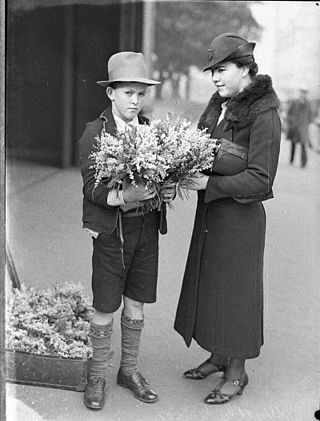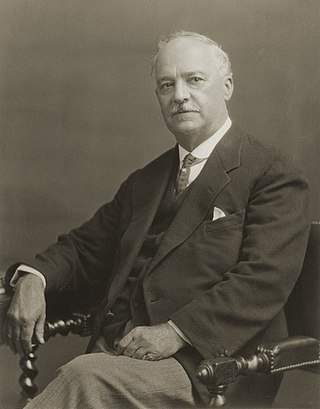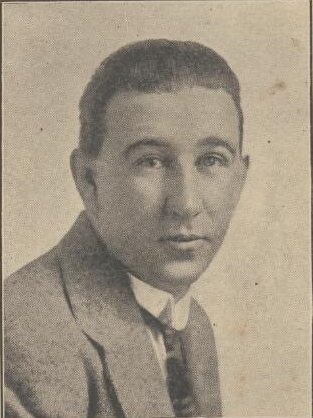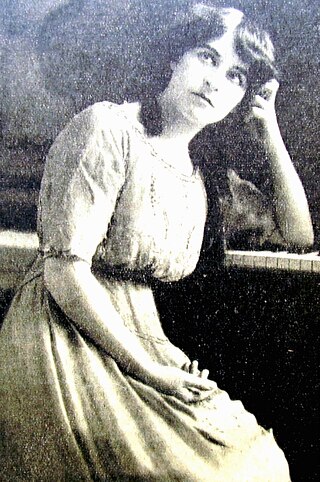
The bunyip is a creature from the aboriginal mythology of southeastern Australia, said to lurk in swamps, billabongs, creeks, riverbeds, and waterholes.

Wattle Day is a day of celebration in Australia on the first day of September each year, which is the official start of the Australian spring. This is the time when many Acacia species, are in flower. So, people wear a sprig of the flowers and leaves to celebrate the day.

George Marlow was an Australian theatrical entrepreneur born in London of Jewish extraction, noted for bringing melodrama and pantomime to Sydney audiences in the early 1900s. His name has been frequently mis-spelled as "George Marlowe".
W. H. Burford and Sons was a soap and candle-making business founded in Adelaide in 1840 by William Henville Burford (1807–1895), an English butcher who arrived in the new colony in 1838. It was one of the earliest soapmakers in Australia, and up to the 1960s when it closed, the oldest. In 1878 he took his two sons Benjamin and William into partnership as W. H. Burford & Sons. Its expansion, accompanied by a number of takeovers, made it the dominant soap manufacturer in South Australia and Western Australia. Its founders were noted public figures in the young city of Adelaide.

Reginald Alberto Agrati Stoneham was an Australian composer and publisher of mostly topical songs, and a musical comedy F.F.F. He was perhaps Australia's leading exponent of jazz and ragtime piano styles in the first decades of the 20th century as both composer and performer. He was also a popular accompanist and recording artist.

The Bunyip is a weekly newspaper, first printed on 5 September 1863, and originally published and printed in Gawler, South Australia. Its distribution area includes the Gawler, Barossa, Light, Playford, and Adelaide Plains areas. Along with The Murray Pioneer, The River News, and The Loxton News,The Bunyip was now owned by the Taylor Group of Newspapers and printed in Renmark.

Sir William John Sowden was a journalist in South Australia, who was knighted in 1918.
Isidor George Beaver, sometimes misspelt "Isidore" and "Beevor", and frequently initialised as "J. G. Beaver", was an architect from England who had a substantial career in Adelaide, South Australia and Melbourne, Victoria. He was also significant in the early history of ice skating in Australia.
George Wilcox & Co. was a South Australian hide and wool business, which in 1917 became Wilcox Mofflin Ltd.

Herbert De Pinna (1883–1936) was a composer and medical doctor. He was a medicine graduate from Cambridge University who trained at Middlesex Hospital. He opened a hospital in Queensland, but claimed he made more money from music.

The Magic Gum Tree is a musical comedy written in 1932. The score and lyrics are the singular work of Adelaide pianist and composer Arline Sauer in 1932. Sauer, born Arline Estelle Lower, married her longtime mentor, the well known Sydney conductor, arranger and composer Charles Sauer in May 1924, had twin sons 1925, divorced 1947.

Vince Courtney was an Australian songwriter, entertainer, singer and radio personality during the vaudeville era. Born in Newcastle, New South Wales in 1887. He was prominent in the early twentieth century. He was born in Newcastle, New South Wales. Although it is unusual for an Australian artist, Courtney was regarded as universally published and a household word from his gramophone recordings and radio broadcasts

Annie May Constance Summerbelle was an Australian composer of light classical and popular music. She was the third daughter of Captain William and Honoriah Summerbelle of Double Bay. Her sister, Stella Clare, married Francis Joseph Bayldon, a master mariner and nautical instructor. From the late 1880s she was a student of Alice Charbonnet-Kellermann, with Summerbelle's earliest compositions appearing in the early 1890s.
"Sleepy Seas" was a hit song which was first published 1920 by Private Reginald Stoneham while he managed the Melola Salon music store. It was an instant popular success with dance halls. The following year sales expanded to other music publishers. This vocal waltz was used to accompany silent movies, in the era before talkies.

Gorjes Christian Crawford-Hellemann was an Australian composer, conductor and organist. He was born in 1881 to William Thomas and Harriet Ann Crawford-Hellemann in Towrang, NSW Australia. He was an Associate of the Royal College of Music. He was organist of Christ Church St Laurence, Sydney, 1927-1931 and 1933–1934. He died 26 February 1954.

Robinson Crusoe or long titled Robinson Crusoe on Rainbow Island was a musical written by Australian actor and theatre manager Victor Prince, with music supplied by Australian composers Herbert De Pinna and Bert Rache. The show was first produced in 1917 by Victor Prince in the lead role in partnership with the Fuller brothers theatre circuit. The dialogue manuscript is lost, but many of the songs remain preserved. The original production had a successful run of 112 consecutive nights at the Grand Opera House, Sydney.

Ella May McFadyen was an Australian poet, journalist and children's writer. For 18 years she conducted "The Children's Page" for The Sydney Mail and was known as Cinderella.
Frederick Harvie Linklater was an English barrister who had a prominent career in Australia. He was the author of several important legal works and popular stage plays. He was personally involved in a bigamous marriage and two libel cases, then was accused of master-minding an insurance fraud. He changed legal jurisdictions several times in what appears to be attempts to start afresh.

Ella Airlie (1882–1959), also known as Ella Palzier Campbell, was an Australian librettist, dramatist, songwriter and performer. She co-wrote the successful Australian musical, The Bunyip.















